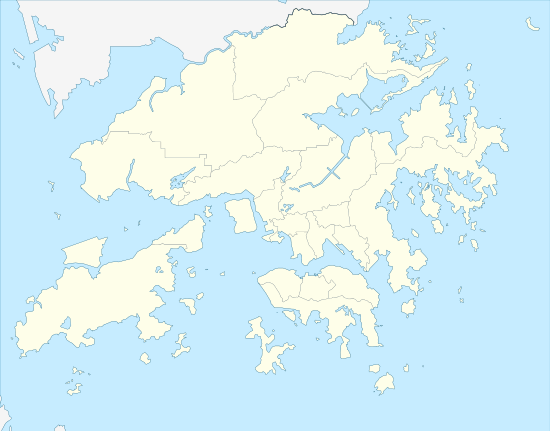Hong Kong Sanatorium & Hospital
| Hong Kong Sanatorium & Hospital | |
|---|---|
| Hong Kong Sanatorium & Hospital Limited | |
|
Hong Kong Sanatorium & Hospital (center glass building and adjacent white building) | |
 | |
| Geography | |
| Location | 2 Village Road, Happy Valley, Hong Kong |
| Coordinates | 22°16′10″N 114°10′59″E / 22.26931°N 114.18294°ECoordinates: 22°16′10″N 114°10′59″E / 22.26931°N 114.18294°E |
| Organisation | |
| Care system | Private |
| Funding | For-profit hospital |
| Hospital type | General |
| Affiliated university | Li Ka Shing Faculty of Medicine, University of Hong Kong and School of Nursing, Open University of Hong Kong |
| Services | |
| Emergency department | No Accident & Emergency |
| Beds | 480 |
| History | |
| Founded | 1922 |
| Links | |
| Website |
www |
| Lists | Hospitals in Hong Kong |
Hong Kong Sanatorium & Hospital (Chinese: 養和醫院), or HKSH, is a private hospital established in 1922 in Happy Valley, Hong Kong.
The hospital has more than 400 beds and various room types and facilities. It also has a 24 hours outpatient consultation service.
HKSH has a School of Nursing, affiliated with The Open University of Hong Kong,[1] which trains nurses up to degree level. It is also affiliated with the Li Ka Shing Faculty of Medicine of the University of Hong Kong and provides clinical attachment opportunities for HKU medical students.
HKSH is surveyed and accredited bi-annually by QHA Trent Accreditation of the United Kingdom, a major international healthcare accreditation group.
With a height of 148.5 metres (487 feet), it is the second-highest hospital building in the world, 15 centimetres shorter than Guy's Hospital in London, UK.
History
The Hospital, when formed in 1922 and known then as The Yeung Wo Nursing Home, was organized by a leading group of Chinese medical practitioners and prominent residents of Hong Kong. The aim was to provide hospital facilities for the Chinese community and to provide accessible accommodation for the patients to be cared for by their own doctors.
"The Happy Retreat", at that time a most popular public amusement centre in Happy Valley, was acquired by the organizers for the purpose. After renovating the two existing buildings which were included in the purchase, the Hospital opened its doors in September 1922 with 28 beds. Dr. Wai-Cheung Chau (周懷璋, 1893-1965), a medical doctor trained in Hong Kong, served as the Superintendent of the Hospital. Dr. Lee Sun Chau (周理信, i.e., 周六姑, 1890-1979), a medical doctor trained in Guangzhou, China, served as the Matron of the Hospital.[2][3]
Four years after the opening, a landslip occurred at the hill slope behind the two buildings and caused considerable damage. The Nursing Home had to be closed for some six months in order that the premises could be made habitable for admission of patients.
The Board of Directors at that time considered that for the number of patients to increase, a good surgeon would have to be found. Dr. Li Shu Fan, who had just returned to Hong Kong after serving as head of Kung Yee University Medical School in Canton, was chosen. Subsequently, in 1926, Dr. Li was elected to head and to re-organise Yeung Wo. It was under his leadership that the name of the nursing home was changed to its present form, Hong Kong Sanatorium & Hospital. From then until his death in 1966, he held the twin positions of Chairman of the Board and Medical Superintendent. After his death, his brother Dr. Li Shu Pui was elected Chairman of the Board of Directors and appointed Medical Superintendent to continue the management of the Hospital. Dr. Li Shu Pui was first elected a director of the Hospital's Board in 1929 and was appointed additionally as Assistant Superintendent in 1936. He therefore served the Hospital in a leadership capacity for seventy years. Dr. Li Shu Pui died on 31 August 2005 and Dr. Li Wai Tat, Walton has succeeded him as the Chairman of the Board of Directors and Medical Superintendent of the Hospital.
See also
References
- ↑ "Message from the President" - Prof. John C Y Leong, Open University of Hong Kong
- ↑ Rebecca Chan Chung, Deborah Chung and Cecilia Ng Wong, "Piloted to Serve", 2012
- ↑ https://www.facebook.com/PilotedToServe
External links
- Official website
- Hong Kong Open University - web site
- Wong & Ouyang (HK) Ltd., "More than half-a-century of architectural design experience in Hong Kong", section "Hong Kong Sanatorium & Hospital", p. 60, September 2009